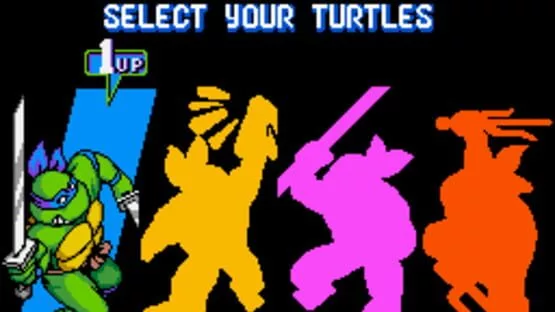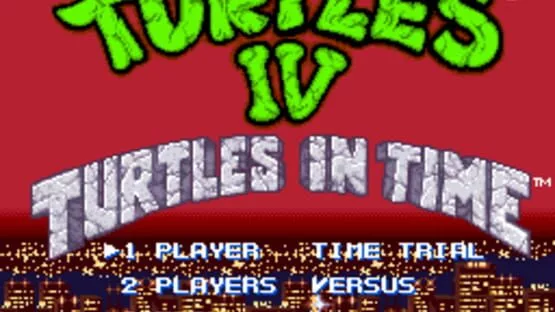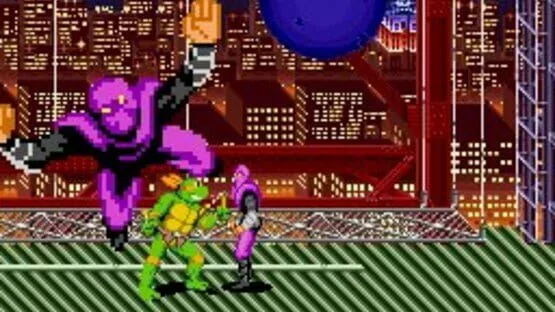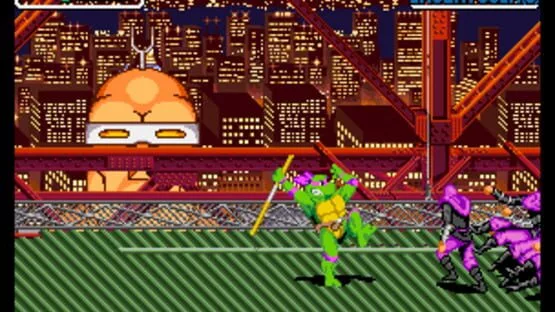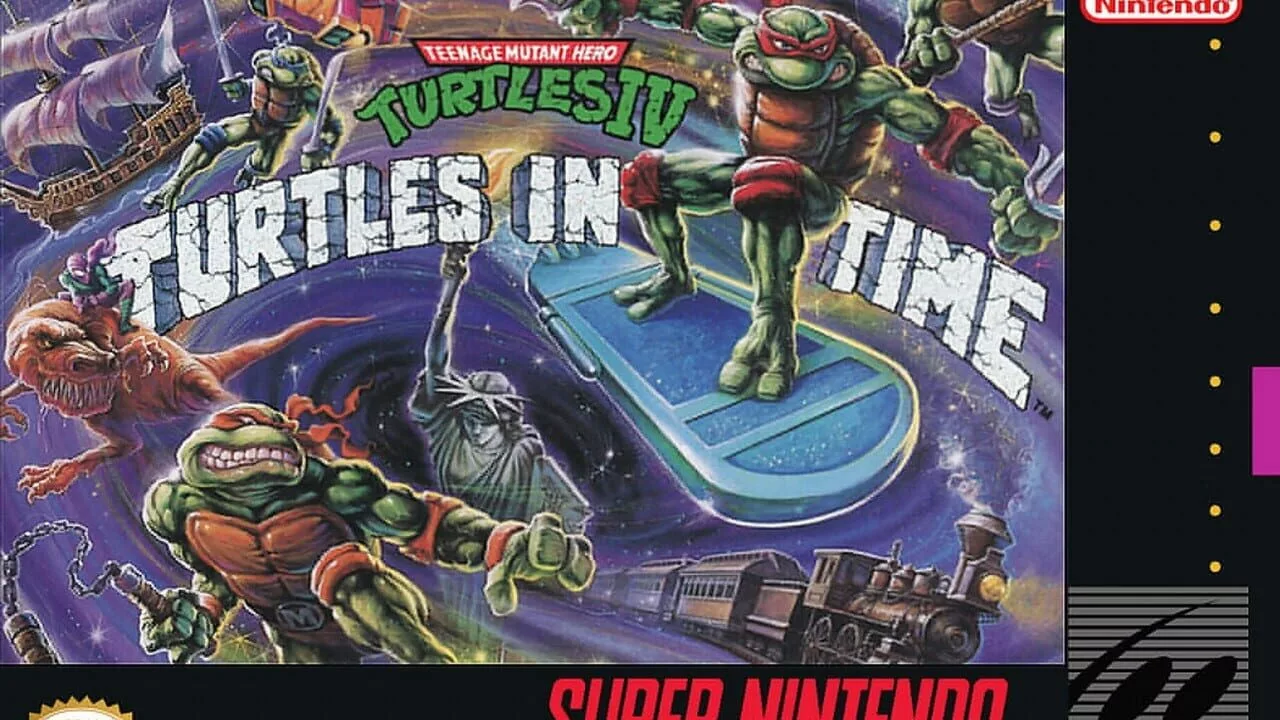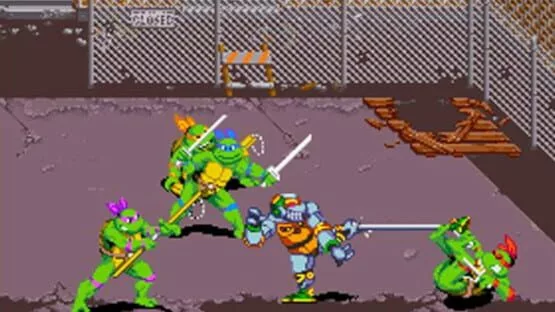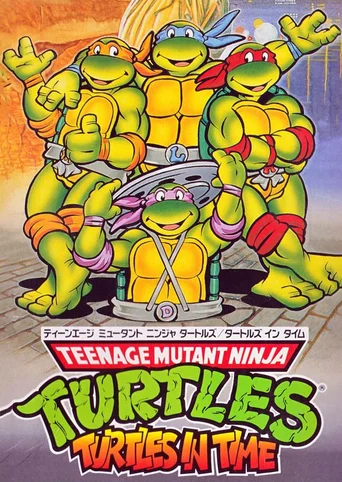
Teenage Mutant Ninja Turtles: Turtles in Time (1991)
Genres:Arcade, Hack and slash/Beat 'em up
Themes:Action, Comedy, Science fiction
Game modes:Single player, Co-operative, Multiplayer
Story:Teenage Mutant Ninja Turtles: Turtles in Time produced by Konami is a beat 'em up side scrolling game for up to two players. It's the fourth Turtles game, following Turtle 3: The Manhattan Project on Nintendo Entertainment System. It was released on the Super Nintendo Entertainment System in 1992, but had been released earlier as an arcade game.Show more
Vote to bring this game to GOG and help preserve it.350
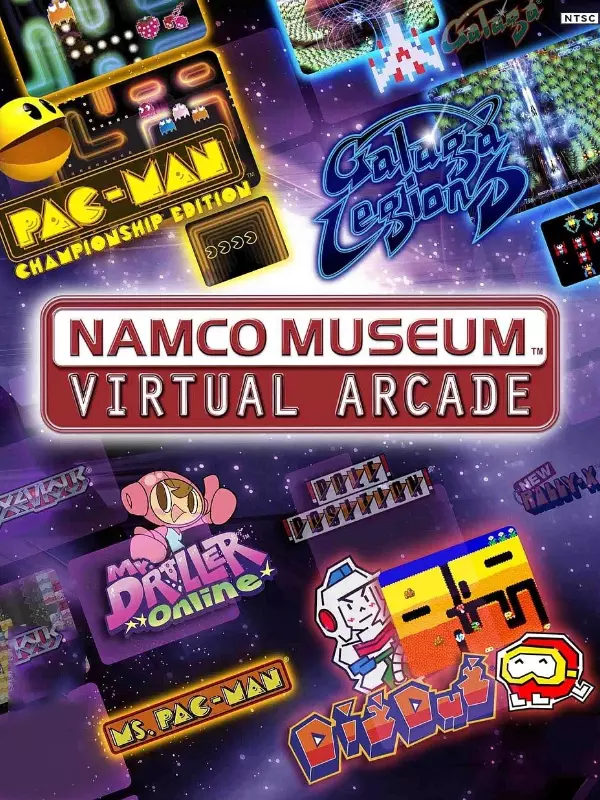
Namco Museum Virtual ArcadeGo back in time with Namco Museum: Virtual Arcade and relive classic Namco arcade favorites including Tower of Druaga, Galaga, Grobda, Mappy, Metro-Cross, Ms. Pac-Man, New Rally-X, Pac-Man Arrangement, Pole Position 2, Sky Kid, and Xevious, just to name a few. Namco Museum: Virtual Arcade also features Pac-Man Championship Edition which was voted the best downloadable game of 2007 by numerous video game publications. Galaga Legions continues Pac-Man Championship Edition's legacy with a smart re-tooling of the franchise that stays true to the series' roots.
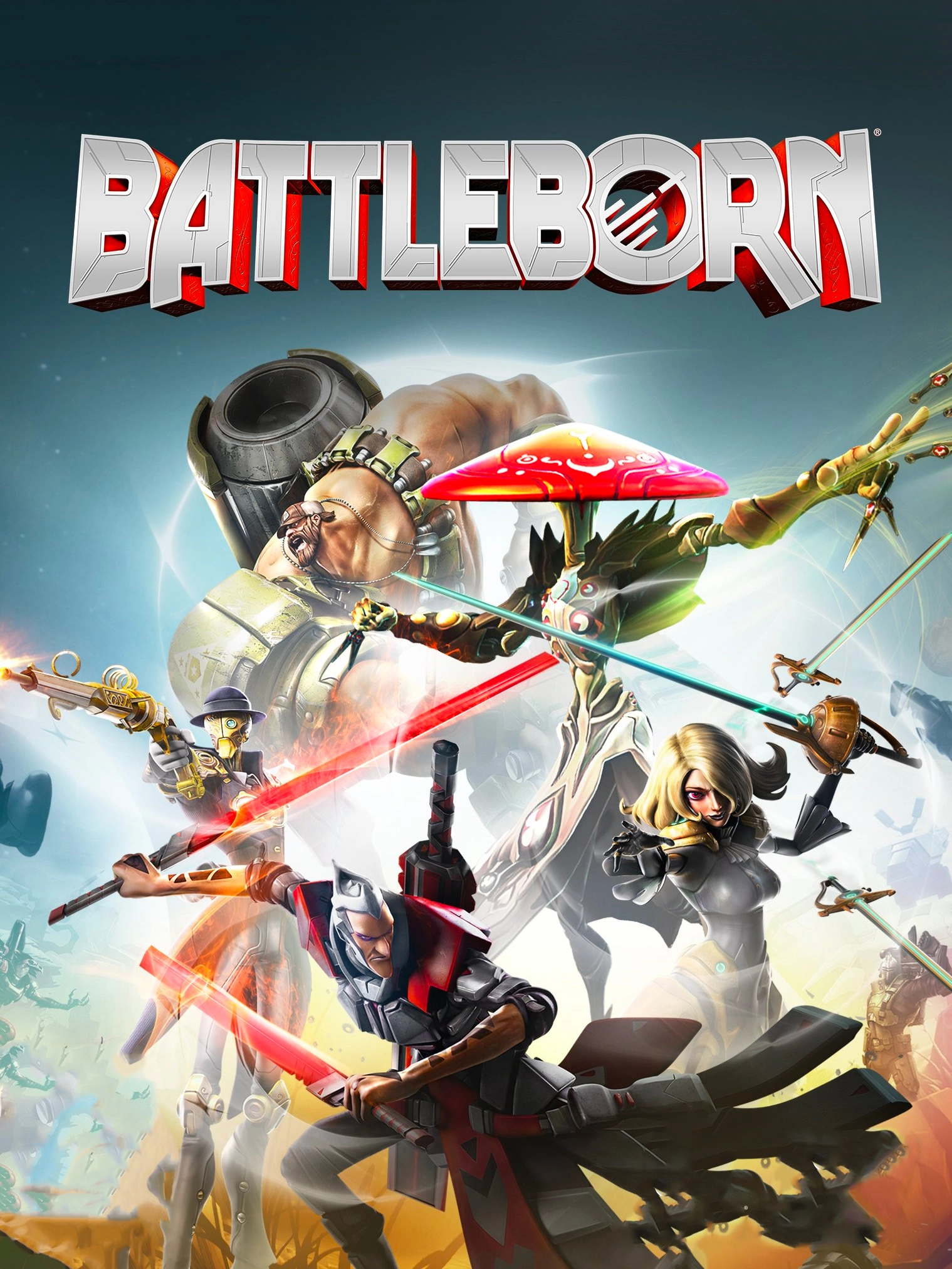
Battleborn"Battleborn is a next-gen hero-shooter brought to you by the creators of the award-winning and best-selling Borderlands franchise. In Battleborn’s distant future, the only hope for the last star in a dying universe is a new breed of warriors, who must put aside their differences to drive back an unstoppable menace. Choose from a myriad of powerful heroes and fight together alongside your friends in an intense co-operative campaign, or battle against them in fast-paced competitive multiplayer matches."
Console versions of the game allow for split-screen co-op in all game modes.Action Fantasy Comedy Science fiction

NieR: AutomataNieR: Automata is an upcoming action role-playing game developed by PlatinumGames and published by Square Enix for the PlayStation 4.
The game is set in the same universe as NieR, a spin-off of the Drakengard series, and takes place several thousand years after the events of that game. Humanity has fled to the moon to escape an invading machine army from another world. Combat androids called YoRHa remain on the planet to fight in a proxy war against the invaders.Trending Open world Action Fantasy Science fiction Drama
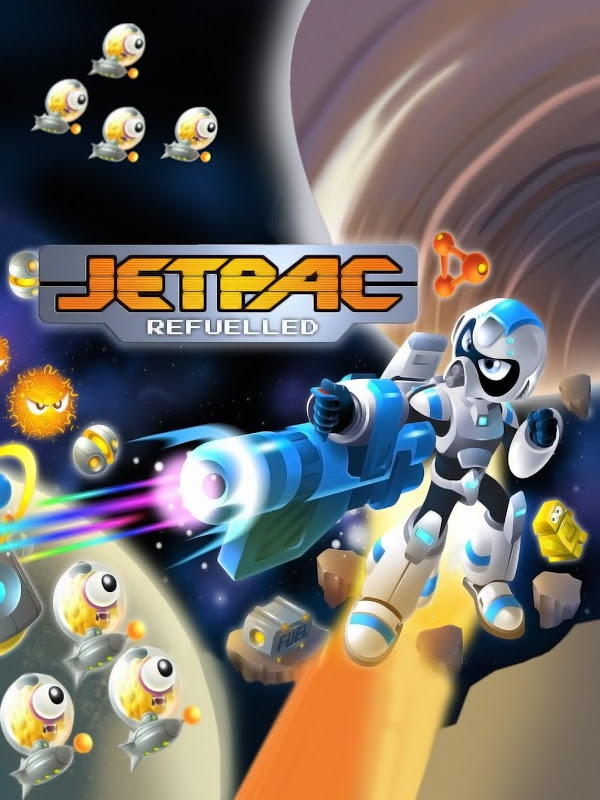
Jetpac RefuelledJetpac Refuelled is the Xbox Live Arcade reworking of the classic 8 bit title Jetpac. The game was developed by Rare, who were responsible for the original game under their previous guise 'Ultimate - Play the Game'.Action Science fiction
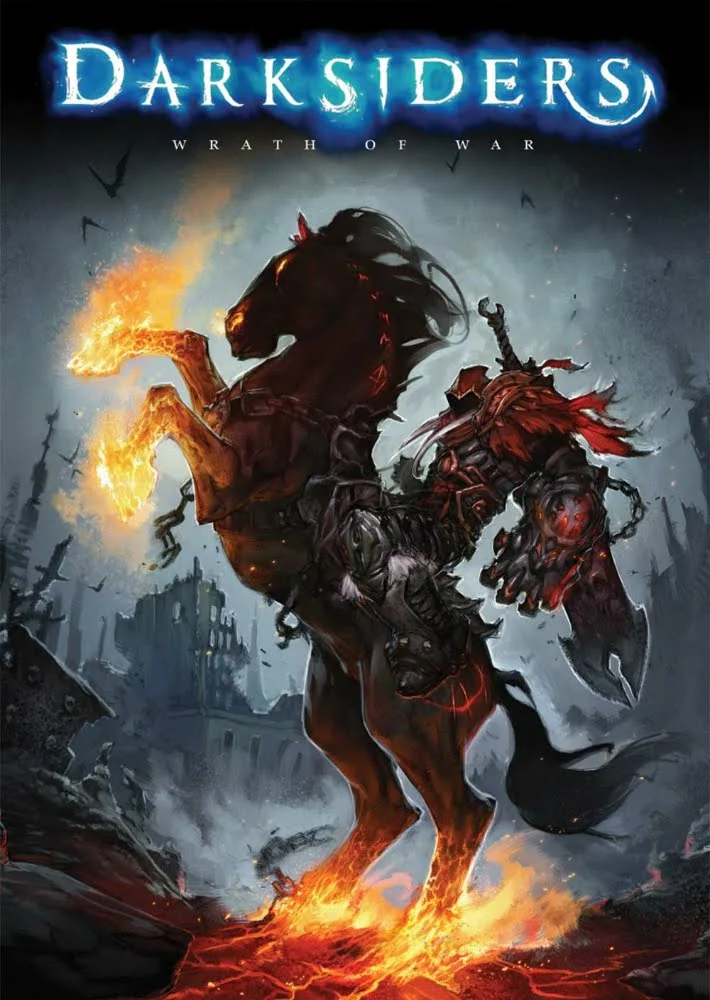
DarksidersApocalyptic power of War: Unleash the wrath of War, combining brutal attacks and supernatural abilities to decimate all who stand in your way.
Epic quest: Battle across the wastelands and demon-infested dungeons of the decimated Earth in your quest for vengeance and redemption.
Character progression: Uncover powerful ancient relics, upgrade your weapons, unlock new abilities, and customize your gameplay style.
Battle Heaven and Hell: Battle against all who stand in your way—from war-weary angelic forces to Hell's hideous demon hordes.Open world Action Fantasy
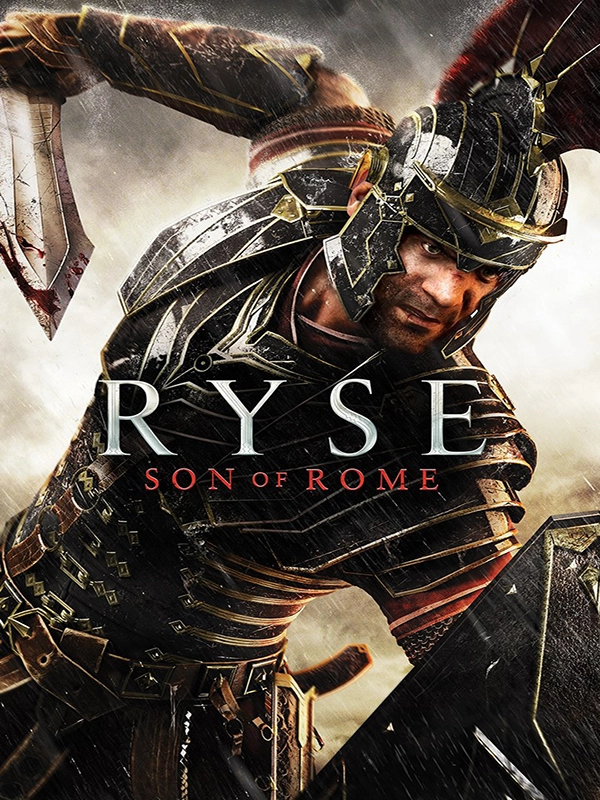
Ryse: Legendary EditionAmidst the chaos of the late Roman Empire, become soldier Marius Titus and embark on a perilous campaign to avenge the death of your family and defend the honor of Rome. In Gladiator Mode, step into the Colosseum and fight for the glory, spectacle, and entertainment of the crowds. Legendary Edition includes full Season Pass contents, three bonus maps optimized for maximum challenge in Solo mode and a new Legionary Skin.Action Historical

Ricochet: Lost WorldsWith its stunning visuals and sound effects, gripping soundtrack and compelling level design, Ricochet Lost Worlds could quite possibly be the most addictive game ever made. This remarkable breakout action game will entertain your whole family for hours on end! Throw into the mix a slew of innovative power-ups, a new "Ring Game" and a level editor where you can make your own levels and you have an unbeatable combination. You just have to download this brick-busting game... it's a blast!Action
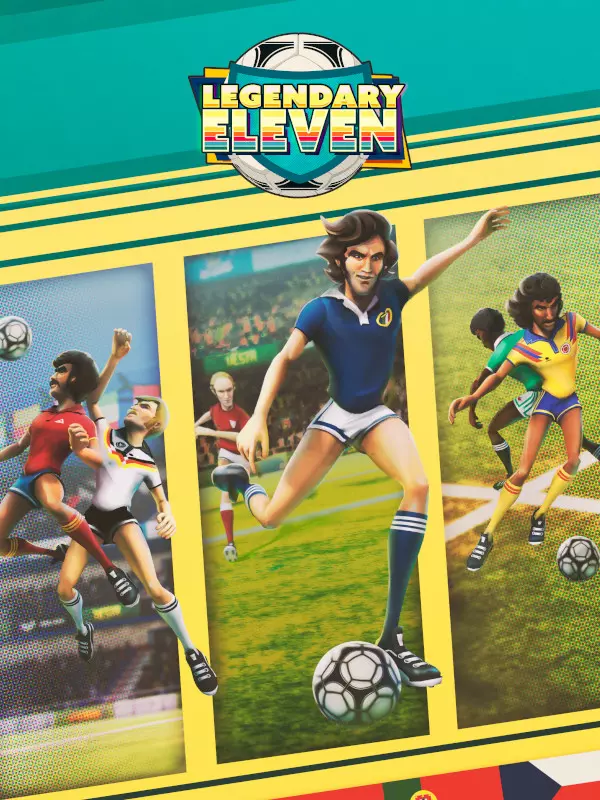
Legendary ElevenLegendary Eleven is an epic arcade football (soccer) game inspired by the golden age of football spanning the 70's to the 90's.New Non-fiction
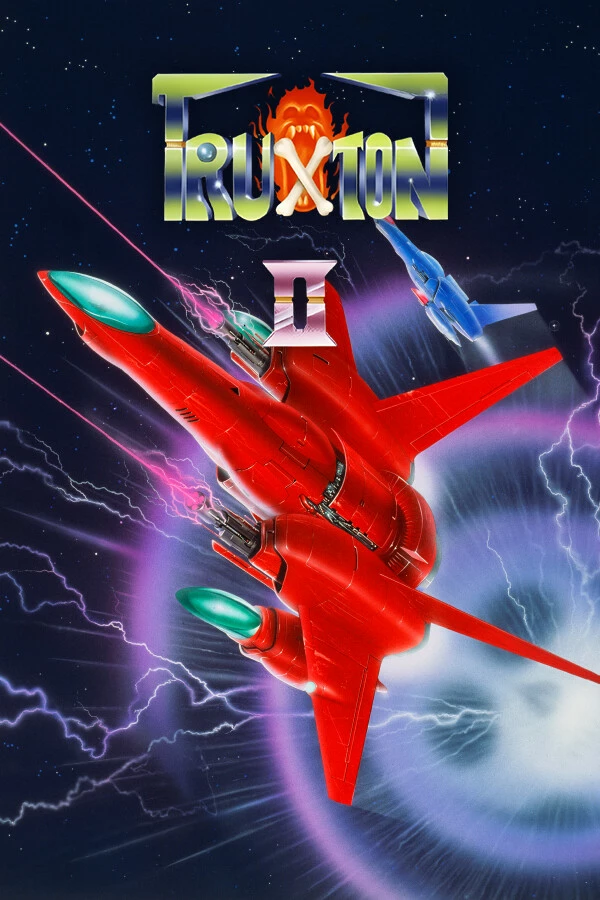
Truxton 2The sequel to Toaplan’s shoot ‘em up masterpiece Truxton is a thrilling insane space action with an unforgiving difficulty level. Enjoy the visually stunning pixel graphics and vibrant music as you dodge the high-speed bullet rain and take on tough bosses.New Action
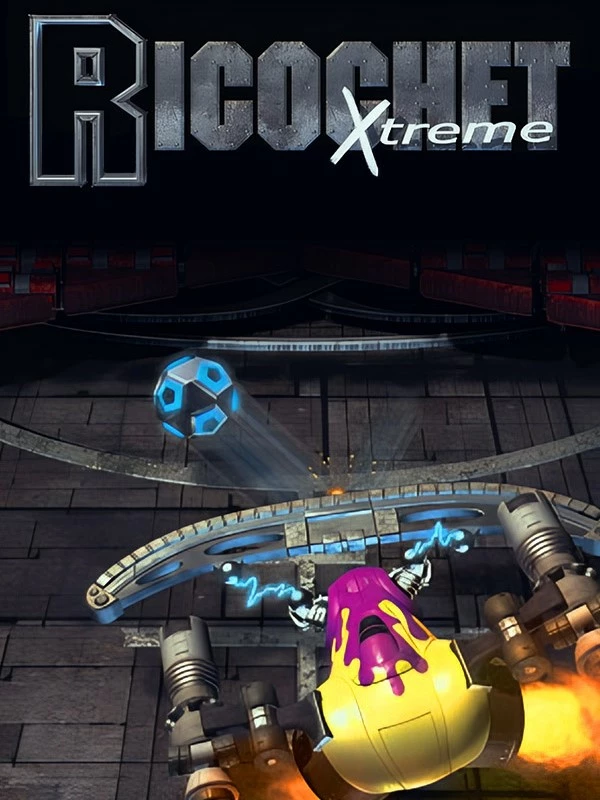
Ricochet XtremeRicochet Xtreme is the first game of the Ricochet franchise by Reflexive Entertainment. Although the base gameplay is like Breakout, it takes much more from Arkanoid.
A fast-paced action Breakout remake that challenges your agility and reflexes, Ricochet Xtreme boasts a whopping 170 levels of intense competition. Featuring four levels of difficulty and a multitude of power-ups and obstacles to dodge, each level provides endless excitement. Whether you're a beginner or an expert in the genre, you'll find a challenge that's just right for your skill set. Enjoy blasting through this futuristic world at blazing speeds while avoiding treacherous hazards with surgical precision – all while keeping your eye on the ball.
Ricochet Xtreme stands out with its unique combination of bonus rounds, one-of-a-kind power-ups and obstacles tailored to keep even veterans on their toes. The graphics are smooth and vivid, making it an immersive experience not to be missed by any Breakout enthusiast. There's always something new to explore as well as epic showdowns to be had, so get ready for some intense ricocheting action.Action

